Lane Minions spawn at 0:04 and every 30.5 sec as waves of 7 (3+1+3) at your Nexus, each heading towards enemy Core on their designated lane. They are
map themed (ex. 3 Footmen, Wizard, 3 Archers), have SightRange of 8,
Caster minion may have support function and upon death drops
Regeneration Globe.
Catapult spawns in lanes with
destroyed enemy Fort and Keep, improves Map Vision (Sight 12), and greatly increases pushing power with long range projectiles. If such lane is not cleared, Catapults from several waves may
stack together and become quite a menace for the Core.
 Lane Minion Stats
Determined by the minute they spawn. Increments are gained only first 30 min.
|
Unit |
HP |
Speed |
Damage |
AtkSpd |
Range |
Special |
Attribute |
XP |
|
Melee |
600 (+30) |
3.25 |
12 (+1) |
0.667 |
0.875 |
+100% vs Structure
-75% vs Biological |
Biological |
70 (+1.2) |
|
Ranged |
400 (+15) |
3.25 |
24 (+1) |
0.667 |
5 |
+100% vs Structure
+80% vs Biological |
Biological |
60 (+2) |
|
Caster |
300 (+15) |
3.25 |
10 (+1) |
0.667 |
3 |
+100% vs Structure
+100% vs Biological |
Biological |
62 (+1.8) |
|
Catapult |
900 (+30) |
3.25 |
40 (+10) |
0.333 |
10 |
+100% vs Structure
+100% radius 0 splash |
Robotic |
1 (+2) | Game uses full description table, but fractions give close enough numbers.
|
Mercenaries are units defending
Camps. Can be recruited once defeated, and head towards their lane and help defending or pushing it.
Bruiser mercs are caster and his escorts. Usually they are
map themed Sorcerer (ranged unit with nuke spell) and 3
Knights (ignore half damage from structures).
Siege mercs are long-ranged units - standard ones are
Siege Giants with area splash (against stationary targets damage even doubles).
Boss suffers half CC duration and is immune to disables.
On lane only attacks structures. Additionally has abilities to destroy player created obstacles and to prevent MULE repair. If
2+ heroes are in melee range (or 3+ units,) casts huge stunning AoE. Against
range 4+ attackers has specific ability:
Grave Golem (used on some maps as Objective related unit too) has
root snare.
Giant Scarab (same stats) releases
twisters that knock back. Boss abilities deal double damage against non-Heroic.
 Standard Merc Stats and Abilities
Determined by the minute they are engaged. Becoming again idle resets.
|
Unit |
HP |
Speed] |
Damage |
AtkSpd |
Range |
Special |
Attribute |
XP |
Knight |
2000
(+120) |
4 |
50 (+3) |
0.8 |
1.25 |
+100% vs Summoned
50% from Structures |
Biological |
50 (+2) |
|
Sorcerer |
1000
(+60) |
4 |
20 (+5) |
0.8 |
5 |
+100% vs Summoned
ability: Magic Volley |
Biological |
75 (+3) |
|
Siege Giants |
2000
(+140) |
4 |
80 (+4) |
0.5 |
10 |
Splash - radius
0.1/1/2 - 100%/75%/50% |
Robotic |
70(+2) |
|
Boss |
10,000
(+800) |
3.75 |
150 (+12) |
1 |
2 |
abilities: boss
+100% vs Summoned |
Robotic |
375 (+10.5) | This is valid until 20:00, timer is set on -1 (2:01), bosses are at -2 timer.
Siege Giants on lane have 1,000 (+120) HP and 100 (+10) Damage
Bosses on lane scale +1500 HP, can only use melee attack (280+23) against structures, 250+7 XP | Magic Volley: 4 magic missiles dealing 40 (+3) Damage
Boss Abilities:
|
Wall Crush |
- |
destroys player made obstacles after 1sec channel |
|
Disable MULE |
- |
6 sec CD, range 8, MULE can't repair HP, DoT 6x25%HP/0.5sec |
|
Stomp |
- |
10s CD, 2 sec delay, radius 4.5 2sec stun + 300 (+15% base) Dmg |
|
Roots |
- |
15 sec CD, 1.5 sec delay, radius 2, 100 Dmg, 3 sec root, DoT 50/s while rooted. |
|
Dust Devils |
- |
15 sec CD, 8 sec radius 2 moving twisters with knockback and 25 Dmg. | All boss abilities scale with 15% / minute and deal +100% vs Biological, Summoned, Structure
|
Battlefield of Eternity replaces standard mercs.
Siege Camps are defended by 3
Khazra Impalers - their
Bloodlust makes them
efficient against high HP targets.
Bruiser Camps have
Fallen Shaman and 2
Fallen Hounds. Harder to clear because of Shaman high HP. As Hounds are free meatshield, they have great
pushing power if left unchecked.
 Battlefield of Eternity Merc Stats and Abilities
Determined by the minute they are engaged. Becoming again idle resets.
|
Unit |
HP |
Speed |
Damage |
AtkSpd |
Range |
Special |
Attribute |
XP |
Fallen Shaman |
3000
(+290) |
4 |
75 (+6) |
0.8 |
5 |
on lane
respawns Hounds |
Biological |
230 (+6) |
|
Fallen Hound |
1300
(+95) |
4 |
20 (+1) |
1 |
1.25 |
ability:
Taunt, Respawn |
Summoned |
on lane adds
XP to FS |
Khazra
Impaler |
1350
(+100) |
4 |
25 (+1.5) |
1 |
10 |
Bloodlust |
Biological |
45 (+2) | This is valid until 20:00, Khazra timer is set on -1 (2:01), Fallen are at -2 timer.
Fallen HP scaling might be 5 points off.
Fallen Shaman on lane has HP halved and respawns killed Hounds.
There his XP is 150( +4) and each Hound killed before him adds 40 (+1). | Taunt: Fallen Hound forces enemy to attack it. range 12 10sec CD
Bloodlust: Attacks mark target. Khazra AtkSpd and Damage against it scale with each stack.
|
Some maps have specific
Objective Related Units. They are individually explained with corresponding maps. Table below lists them with their stats.
 Map Specific Unit Stats
Determined by the minute they spawn.
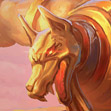 Sky Temple Sky Temple units and
 Haunted Mines Haunted Mines Golem are at -2 timer (3:01). First spawns at -1.
|
Unit |
HP |
Speed |
Damage |
AtkSpeed |
Range |
Special |
Attribute |
XP |
|
Guardian |
2000
(+240) |
4 |
50 (+5) |
0.8 |
2 |
ability: Swipe |
Robotic |
200 (+5) |
|
Temple Guard |
700
(+75) |
4 |
15 (+3) |
0.8 |
5 |
spawn in pairs
after 10 and 25 shots |
Robotic |
50 (+2) |
Skeletal
Pirate |
800
(+60) |
3.5 |
20 (+1.25) |
1 |
1 |
-50% vs Shields
10 sec OOC regen |
Light |
50 (+1) |
Zombie Miner
melee |
300
(+1) |
3.25 |
12 (+2) |
0.667 |
0.825 |
objective related |
light |
28 (+1) |
Zombie Miner
ranged |
220
(+1) |
3.25 |
12 (+2) |
1.1 |
5.5 |
objective related |
light |
28 (+1) |
Underworld
Grave Golem |
6000
(+900) |
3.25 |
150 (+10) |
1 |
2 |
objective related
ability: Golem* |
light |
560 (+14*) |
Summoned
lane Golem |
3000
(+1) |
3.25 |
67 (+4) |
0.667 |
2 |
objective related
ability: Golem** |
Biological
Robotic, Hover |
250 |
Shambler
melee |
600
(+30) |
3.25 |
15 (+3) |
1 |
0.825 |
objective related |
light |
60 (+2) |
Shambler
ranged |
450
(+30) |
3.25 |
15 (+3) |
1 |
5.5 |
objective related |
light |
60 (+2) |
Garden Terror
Golem |
4000
(+1500) |
3.25 |
75 (+12.5) |
1 |
2 |
objective related
ability: Golem*** |
light |
350 (+12) | Pirates and Shamblers have out of combat regeneration. Guardians and Pirates behave like camp defenders - when not engaged become idle and reset.
Guardian ability Swipe: cone shaped AoE with knockback, 200 (+40)damage.
*Underworld Boss - after every 5 minutes his XP increase grows by +4
**Summoned Golem HP is 5 min +900, next 5 +750, next 5 +650, then +800.
Abilities are modified: increase by +4 and deal: Stomp 35 and Roots 15/30.
Skull bonus is +5% HP, damage and spells per stack. 60+ skulls it becomes +1%.
*** this toned down Grave Golem version has ability increase of 5% instead of 15%. | Game uses full description table, but fractions give close enough numbers.
|
 Main Objective Units
Dragon Knight 5000 HP, 100 (+20) damage. Each minute for 5 minutes HP increase is respectively +600/+700/+900/+1200/+1600/+2100. Duration (40 + 2x Minutes) seconds
Garden Terror 200 Weapon Damage, increases 5 minutes by +20, then 10x +30, 5x +34, 5x +38
HP is complex (+410, +480, +615 ...) - suffice to say that quickest spawn is 6200 HP, at 10 min ~10,000, 15 min ~13000, 20 min ~17,000 and 20+ grows out of proportion. Duration (80 + 2x Minutes) seconds
Immortal (Ilarion/Beleth) 6750 (+1800) HP, 200 (+35) damage for both abilities, 750 (+35) XP (global). Fallen Immortal's team gets portion of XP depending on damage. On lane XP depends on Shield value (which is equal to HP at end of battle). |
|
Structures are buildings helping protect Nexus courtyard and its approaches. Some are passive obstacles, others attack incoming enemies, prioritizing minions/mercs over heroes.
Altar of Storms is the place heroes spawn, respawn, or teleport to using
Hearthstone. Replenishes hero HP and mana and has barrier stopping any enemy attack.
Core is placed next to Altar of Storms. Game's ultimate goal is to destroy it. Spawns every 30.5 sec (starting at 0:04) waves of
lane minions. Its turret
cannot be disabled, uses no
ammo, shoots at
cloaked units and deals splash damage. Gets HP increase first 20 minutes and until a
Keep is taken down is
invulnerable.[eule]
Lanes leading to it have
outer and
inner Defense Line (or 1st and 2nd line). Each is formed by a Gate, 2 Cannon Towers and 2 Walls, completely blocking out the enemy. Another Tower, Healing Fountain and a Town Hall behind them complete such line.
Inner line structures are of higher tier.
Town Hall is generally referred as fort, when more specific
Fort and
Keep.
Destroying Keeps is mid-goal determining who has late game advantage. Turret has
Slow effect.
Destroyed Town Hall forms huge impassable piles of rubble.
|
Tower |
fortified cannon turret with limited ammo |
|
Fort |
outer Town Hall |
|
Keep |
inner Town Hall |
|
Gate |
entrance impassable for enemies |
|
Defensive Wall |
passive obstacles granting some vision |
|
Healing Fountain |
(Moonwell) provides Rejuvenation buff to heroes |
Ammo -
towers and
forts need ammunition to shoot. The have respectively
20 and
40 at the start and
regenerate 1 ammo every 15 second. Once a structure is out of ammo, it won't shoot for 30 seconds.
 Structure Stats
|
Structure |
HP |
Damage |
AtkRate |
Ammo |
Range |
Vision |
Special |
XP |
Core |
14,000
(+400) |
220
splash r2 |
1 |
unlimited |
8 |
12
True |
Shield 50% from max HP
+100% vs non-Heroic |
- |
|
Fort |
9000 |
150 |
1 |
40 |
8 |
12 |
Slow -50%
AtkSpd and MovSpd |
650 |
|
Keep |
13,000 |
200 |
1 |
40 |
8 |
12 |
Slow -50%
AtkSpd and MovSpd |
1300 |
Outer
Tower |
3000 |
100 |
1 |
20 |
7 |
8 |
- |
400 |
Inner
Tower |
4300 |
150 |
1 |
20 |
7 |
8 |
- |
800 |
Outer
Gate |
3700 |
- |
- |
- |
- |
8 |
impassable
for enemies |
- |
Inner
Gate |
5000 |
- |
- |
- |
- |
8 |
impassable
for enemies |
- |
Outer Healing
Fountain |
1750 |
- |
- |
- |
- |
8 |
Rejuvenation buff
100s hero CD |
- |
Inner Healing
Fountain |
2000 |
- |
- |
- |
- |
8 |
Rejuveation buff
100s hero CD |
- |
Outer
Wall |
1350 |
- |
- |
- |
- |
5 |
- |
- |
Inner
Wall |
1900 |
- |
- |
- |
- |
5 |
|
- |
Core Shield has +100/sec thaks to 8sec out of combat regeneration
Out of Ammo turrets can't shoot for 30 seconds
Moonwell buff is 20 sec 1.78 rate (35 ticks) +1.5% HP and +1% mana |
|
Objectives,
XP and
Vision have greatest impact. Other mechanics worth mentioning:
Taking control over objects is usually done by
capping the
Beacon representing them.
Defeated heroes with some exceptions reappear at their
Altar of Storms after
respawn timer is up.
All heroes can teleport back to
Altar of Storms after
7 sec channeling using
Hearthstone.
Most heroes can summon a
mount with
+40% movement speed after
2 sec channeling.
Heroes HP and mana are restored over time by their
innate regeneration and by
Rejuvenation buffs from visiting
Moonwells or picking up
Regeneration Globes.
last hit mechanics in HotS are different compared to other MOBAs and can be dealt by multiple sources.
Channeling itself is basic mechanic in this game. Activities requiring it get
interrupted (unlike
channeled spells) by simply taking damage.
|
respawn timer |
delay between hero's tajedown and his respawn |
|
Beacon |
circle with progress bar for capping represented object |
|
Hearthstone |
object representing hero's ability to telepoet back home |
|
hearthing |
using Hearthstone |
|
Mount |
representation of movement speed self-buff |
|
mounting |
process of summoning the mount |
|
Rejuvenation buff |
restores HP and mana over time for its duration |
|
Regeneration Globe |
drops that cast lvl.1 Rejuvenation buff upon picking |
|
last hit |
dealing damage in the second of death. |
|
drop |
object appearing upon killing a unit |
|
capping |
(cap) take control of, abbreviation from capture |
 Details
Respawn Timer - maxed at level 20
|
level |
1 |
2 |
3 |
4 |
5 |
6 |
7 |
8 |
9 |
10 |
11 |
12 |
13 |
14 |
15 |
16 |
17 |
18 |
19 |
20 |
|
seconds |
9 |
10 |
11 |
12 |
13 |
14 |
16 |
18 |
20 |
23 |
26 |
29 |
32 |
36 |
40 |
44 |
50 |
56 |
62 |
65 |
Beacons are used for Watch Tower, Mercenary Camps and
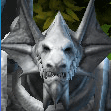 Dragon Shire shrines. Progress bar starts at neutral mid position. Hero on beacon moves the bar in direction of his team. Negating control takes as long as initial capping, Re-capturing double the time. Heroes from both teams on a beacon stop progress. Dragon Shire shrines. Progress bar starts at neutral mid position. Hero on beacon moves the bar in direction of his team. Negating control takes as long as initial capping, Re-capturing double the time. Heroes from both teams on a beacon stop progress.
Some map specific objects also require channeling - tributes, turn-in and transformation points.
Mounted heroes upon taking damage, attacking or casting dismount and (Z) enters 4 sec CD.
 Falstad, [[Sgt. Falstad, [[Sgt.
Hammer]],
 The Lost Vikings, The Lost Vikings,
 Abathur and Abathur and
 Brightwing have their mount buff replaced. Brightwing have their mount buff replaced.
Innate regeneration scales both with levels and HP/mana pools increase. Heroes using other energy types do not restore them over time.
Regeneration Globes only your team can pick are green (caster minions, merc camps), gray for opponents, purple if anybody's pick (Bosses, objective units). Some talents are centered on collecting stacks.
Their buff is named Rejuvenation potion level 1. That from Moonwells is level 2.
last hit is mostly used for gaining XP when out of range, but the mechanics are important with stacking skills too (ex.
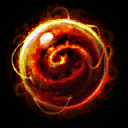 Taste for Blood). Having ticking DoT guarantees to get kill credits. Taste for Blood). Having ticking DoT guarantees to get kill credits.
cap shouldn't be mistaken for its other use (setting threshold)
|
|
Objectives
Each map expects teams to fulfill some tasks, the reward being beneficial event temporarily increasing their
pushing power. Some of those
Objectives can give big early or midgame lead that even snowballs, while others have decisive effect by themselves if obtained during late game.
As this is the
most efficient way to push lanes and even Core, most of team strategies revolve around contesting them with opponents. One can win a game by clever use of
Mercenaries and
split pushing while losing on Objective count, but still they remain of
top strategic priority.
Every map has its own objectives and adds
Objective related units and/or objects.
|
turn-in point |
object that requires channeling to add objective drops to team's count |
|
transformation point |
object where after channeling, a hero transforms into objective reward |
|
objective counter |
shows team progress in collecting/turning in the required drops |
 Details
Collectible drops are Seeds, Skulls, Gems and Doubloons. Last two are carried by heroes (amounts are noted beside health bar and can be tracked on team panel (TAB)) and need to be turned in. If bearer is killed they are dropped once again (coins can be picked by opposing team).
Objectives are often subjeted to fine tuning to make maps more balanced and less snowbally. |
|
XP
Heroes progress by gaining
experience points (XP). Having higher level than opponents significantly improves team's chances. XP is gained by killing heroes and
units and destroying
structures. Tables in corresponding sections have the exact numbers, during early game
Lane Minions being the main source.
XP is evenly distributed between team members. XP from takedowns (no matter the reason for death) and structures is
global. Killed units count only if within
standard sight range (
8) or
last hit was delivered by a skill (spell or summoned unit).
|
underdog bonus |
bonus/penalty for killing heroes depending on team XP difference |
|
XP soaking |
gaining experience from Lane Minions |
|
passive XP soak |
soaking XP from lane without actively attacking minions |
|
feeding |
needles death giving HP away |
|
XP range |
units are visible and within range 8 |
|
XP denial |
zoning enemy hero away enough from dying minions |
Vision
Being able to follow enemy movement and keep an eye over
objectives and
merc camps is important strategic factor. Besides that, during fights often having
Line of Sight decides if a hero lives or dies.
Vision is granted by controlled heroes,
structures, or any allied unit. Can be also achieved by hero skills or by controlling
Watch Tower - object represented by a
beacon, that has
sight range of 12 and ignores
LoS. It takes
3 seconds to cap, and if enemy controls it -
3 sec to negate or
6 sec to recapture.
Vision can be obstructed by impassable
obstacle, enemy
structure or a
bush. Also can be reduced by event (ex. during
night cycle on
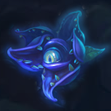 Garden of Terror
Garden of Terror.
Good map vision helps a lot your
Map Awareness - the ability to predict enemy plans and moves.
|
Fog of War |
other units can only be seen in areas over which you have vision |
|
sight range |
distance over which heroes, units, structures and objects grant vision |
|
cloaked |
unit has Cloak (untargetable and only visible as blur) activated |
|
reveal |
make area and cloaked units within visible |
|
Line of Sight |
(LoS) absence of obstacles blocking vision on target |
|
hidden hero |
hero within Bush out of enemy line of sight |
 Details
Maps with Watch Tower:
 Blackheart's Bay and Blackheart's Bay and
 Sky Temple have such between mid and top lanes. On Sky Temple have such between mid and top lanes. On
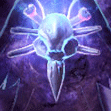 Cursed Hollow and Cursed Hollow and
 Haunted Mines on each side approaches to defensive Siege Giants are covered by one. Haunted Mines on each side approaches to defensive Siege Giants are covered by one.
Hero skills for area vision:
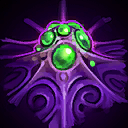 Creep Tumor and Creep Tumor and
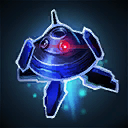 Scouting Drone last longer, Scouting Drone last longer,
 Oracle, Oracle,
 Clairvoyance, Clairvoyance,
 Farsight and Farsight and
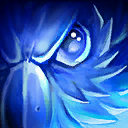 Sentinel are used for immediate scouting. Sentinel are used for immediate scouting.
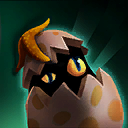 Spawn Egg also gives vision, even over obstacles but isn't advisable to serve as active scout. Any summoning skill, including Spawn Egg also gives vision, even over obstacles but isn't advisable to serve as active scout. Any summoning skill, including
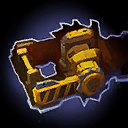 Calldown: MULE can be used for vision purposes. Calldown: MULE can be used for vision purposes.
Cloaked units are revealed when attacking, channeling, taking damage or by skills revealing area.
 Nova and Nova and
 Zeratul have innate 3 sec out of combat Cloak. Zeratul have innate 3 sec out of combat Cloak.
 Tyrande, Tyrande,
 Sylvanas, Sylvanas,
 Rehgar and Rehgar and
 Tassadar may access briefly cloaked state by using skills ( Tassadar may access briefly cloaked state by using skills (
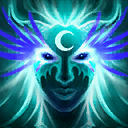 Shadowstalk, Shadowstalk,
 Shade Form, Shade Form,
 Shadow Wolf, Dimensional Shift). Shadow Wolf, Dimensional Shift).
Core turret has true vision and shoots at cloaked units.
Hidden heroes have floating gray eye glyph over their heads. If they are visible to enemies, glyph turns red.
tips: cheap AoE skills (ex.
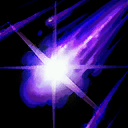 Moonfire, Moonfire,
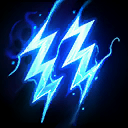 Psionic Storm, Psionic Storm,
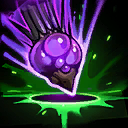 Infested Drop) are good way to deal with suspected cloaked or hidden enemies. Infested Drop) are good way to deal with suspected cloaked or hidden enemies. |
|
Beside
roles, other hero related subsections are:
mobility,
skill types,
crowd control,
damage and prevention,
engagements,
hero tiers,
archetypes
There are 4 classes in HotS
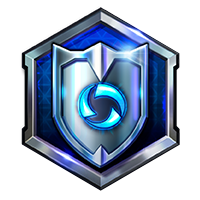 Warrior
Warrior,
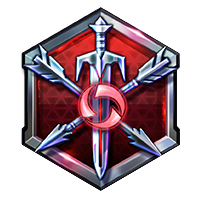 Assassin
Assassin,
 Support
Support and
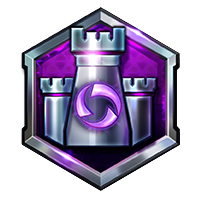 Specialist
Specialist, but when it comes to roles and team composition things become a bit more complicated. Also every region has its own meta and pick methods.
Classic composition was tank, healer, 2 ranged and 1 melee DPS that had its power spike for team fights at the time of their Heroics. Now prevalent are compositions with
double Warrior (that once existed only in Chinese meta), teams sometimes go for double Healer or even triple Warrior setups.
Team positions depend on regional meta. Having dedicated Main Tank, Ranged DPS and Main Support is not only players to be really familiar with their heroes but as well team to know exactly what playstile to expect of them and have better coordination. The other two slots vary. In melee heavy meta (Korea) it is normal to have dedicated Beuiser for aggressive melees and a
Flex (flexible position - takes hybrid, off-tank or whatever the draft forces him into). EU meta usually has two Flexes, melle DPS heroes are considered hybrid. Flexes can also use lane roles - solo laner, off-laner or roamer (more on tri-laning in Details).
|
Tank (Main Tank) |
hero with innate CC and able to soak a lot of damage |
|
Bruiser |
melee hero with good self-sustain and able to take some beating |
|
Carry (ADC) |
designated Damage Dealer during fights (a.k.a DPS) |
|
Healer (Main Support) |
hero specialized on healing and supporting the team |
|
Semi-support |
some heals, buffs and debufs as well as damage dealing skills |
|
Initiator |
hero forcing team fights by diving or CC-ing an enemy |
|
Off-tank |
the 2nd
 Warrior, usually Bruiser, in double tank compositions Warrior, usually Bruiser, in double tank compositions |
|
Melee Assassin (Melee DPS) |
damage dealer engaging enemy heroes at close range |
|
Range DPS |
heroes capable to deal significant damage from distance |
|
Hybrid |
hero not dedicated as tank, healer or DPS |
|
Auto-attacker |
hero relying on basic attacks (AA) and picking talents boosting them |
|
Caster |
hero whose damage is based on his spells |
|
frontliner |
hero who can survive fighting in front, exposed to enemy attacks |
|
backliner |
hero who can't afford to be exposed, usually has small HP pool (squishy) |
Hero mobility influences positioning, repositioning and capability to engage, chase or disengage. Impeding opponents from doing the same is key in many situations
|
Body Block |
physically obstructing enemy movement by positioning a hero on its path |
|
Hit Box / Collision |
area occupied by a hero for targeting/movement purposes |
|
Peel |
separate enemy hero from his team or target |
|
Dive |
bypass enemy frontline usually engaging one of the squishes |
|
Gap-closer |
skill allowing to very quickly get to a different spot |
|
Teleport (Blink) |
instantly reappear from point A to point B |
|
charge / jump |
quickly traverse distanse from A to B, jumps ignore ground obstacles |
|
disengage skill |
skill allowing to get away from attackers |
|
initiating skill (engage skill) |
either gap-closer or holds enemy hero in place untill you get to him |
|
Juke |
sudden changes of direction to evade attacks or to break LoS |
|
Kite |
moving away from attackers while dealing damage thanks to superior range |
|
Stutter-spep |
repositioning between basic attacks without losing dps |
 Details
|
Heroes interact with environment and other heroes by the use of
Skills or
Basic Attacka. Skills may deal or heal damage, apply effects or summon allied minions. Skills differ on their targeting, area and effects. Some spells
auto-pick among visible targets based on proximity and priority.
Targeted skills may be single or multi-hit,
areal ones target area on the map. Skills may have instant effect,or be
Ongoing spells.
The
channeled ones and those that require
pre-channeling can be interrupted even by simple
daze.
Semi-channeled can only be stopped by
hard interrupts. Some of the ongoing hero-centered effects can only be stopped by
morph disablers.
|
Skillshot |
directional spell not requiring target |
|
AoE (Area of Effect) |
spell affects the entire area including cloaked or hidden heroes |
|
Targeted Skill |
needs initial visible target within range |
|
Aura |
centered ongoing effect; heals, damages or applies effects within its radius |
|
Global Skill |
no range restriction for targeting |
|
channeled skill |
caster is unable to move or act for its duration |
|
semi-channeled skill |
caster can only move for its duration |
|
pre-channel |
requires short channeling before cast |
|
Buff / Debuff |
target has ongoing beneficial/harmful effect |
|
Fade |
some buffs/debuff have their effect decrease over time |
 Details
|
Crowd Control (or
CC) skills have greatest impact on team's strategy and tactical decisions during fights. Especially powerful are
hard interrupt effects (stuns, silences and polymorphs).
|
Stun |
unit is unable to act |
|
Silence |
affected hero can't use skills |
|
polymorph |
unit is silenced and transformed into weaker one |
|
Interrupt |
stops channeled, semi-channeled or ongoing skill |
|
morph disabler |
temporary remove a hero from battle |
|
displacement skill |
Knockback away or Pull towards spell center |
|
Daze |
results from displacement skills, soft interrupt |
|
Root |
disables movement |
|
Slow |
slows by % |
|
Blind |
target misses with Basic attacks |
|
Cleanse |
remove CC effects from target |
|
Unstoppable |
immune to CC |
Damage depending on its source is
Heroic damage and
non-Heroic damage. Heroic damage from Skills is considered
Spell Damage, the other being
Basic Attack damage. Can be affected by buffs and debuffs and is counteracted by preventing or healing. Innate regenerative effects help too, as well as
rejuvenation buffs.
|
Burst / Sustained damage |
dealing damage in huge spikes or evenly distributed over time |
|
DoT / HoT |
Damage/Heal over Time for sertain period |
|
tick |
activation of ongoing or over-time spell |
|
Shield |
temporary HP buffer |
|
Block |
negate (partially) damage rom Basic Attacks |
|
Self-sustain |
hero's capability to restore/prevent HP loss by himself |
|
Life Leach (LL) |
dealing damage restores portion of HP |
|
invulnerability |
state of being immune to damage or harmful spells |
|
frames |
brief moments of invulnerability provided by some skills |
|
Vulnerable |
debuffed to take increased damage |
 Details
|
PvE elements play their part (primary and secondary objectives), still different hero engagements are what greatly influences match outcome.
|
1v1 or 1 vs. 1 |
confronting 1 enemy hero |
|
Duel |
1v1 when disengage is not an option |
|
Skirmish |
groups of heroes from both teams engage over some strategic point |
|
Team Fight |
4+ vs. 4+ when heroics and synergies are very important |
|
posturing |
maneuvering without really engaging |
|
scrappy fight |
both sides at the end have several heroes at very low HP and |
|
engage / disengage |
start a fight / retreat from a fight |
|
team wipe |
in a team fight one side loses all heroes |
|
focused fire |
all heroes concentrate their atacks agains hthe same target |
|
out of position |
wither fighting in unfavorable position or unable to join in time |
 Details
knowing hero's 1v1 on lane helps a lot to plan lane formations
posturing around major objective is often used to by time -
either for split push or to saok a bit XP for next tier talents
Duels also occur during skirmishes and team fights, when 2 heroes focus each other ignoring the rest.
initial skirmishes are often used to gauge opponent's composition and playstyle |
|
Every hero individually is a viable pick, but some require specific composition to be strong, while others fit easier in many different setups and don't require many hours of team practice so that team mates get used to them. Following list reflects
popularity and
adaptability of all heroes.
 Hero Tiers
Tier S
Can be used on any map, in any composition and against any composition
 Johanna, Johanna,
 Kael'thas, Kael'thas,
 Zeratul, Zeratul,
 Uther, Uther,
 Zagara Zagara
Tier A
Top notch picks as long as there are composition slots available for them
 Muradin, Muradin,
 Leoric, Leoric,
 Anub'arak, Anub'arak,
 Jaina, Jaina,
 Sylvanas, Sylvanas,
 Valla, Valla,
 Falstad Falstad
 The Butcher, The Butcher,
 Illidan, Illidan,
 Rehgar, Rehgar,
 Malfurion, Malfurion,
 Nazeebo, Nazeebo,
 Abathur, Abathur,
 The Lost Vikings The Lost Vikings
Tier B
Pretty good heros but don't fit some compositions and playstyles
 Arthas, Arthas,
 Tyrael, Tyrael,
 E.T.C.. E.T.C..
 Kerrigan, Kerrigan,
 Tychus Tychus
 Li Li, Li Li,
 Tassadar, Tassadar,
 Tyrande, Tyrande,
 Azmodan, Azmodan,
 Sgt. Hammer Sgt. Hammer
Tier C
If picked, team has to be accustomed to the different playstyle they bring
 Stitches, Stitches,
 Diablo, Diablo,
 Sonya, Sonya,
 Raynor, Raynor,
 Nova, Nova,
 Brightwing, Brightwing,
 Gazlowe, Gazlowe,
 Murky Murky
Tier D
Either countered by current meta or much better version of the hero is introduced
 Chen - not only Johanna hard counters him, at the same time got 2 abilities nerfed Chen - not only Johanna hard counters him, at the same time got 2 abilities nerfed
 Thrall - apart from Johanna being a problem, was released the Butcher as much better version Thrall - apart from Johanna being a problem, was released the Butcher as much better version |
|
Composition Archetypes
Depending on their power spike besides
standard team fight compositions there are
Skirmish ones comprised of strong early game heroes and
late game oriented that dominate from late midgame on.
Archetypes are based on team behavior and strategy. Often hero talents and roles are tweaked and what seem more like other archetype adapts its behavior to counter opponent's composition.
The standard one -
Team fight - is centered around heroes with highly efficient in team fights AoE skills and disablers, power spike at Heroics.
To counter that, teams go for
Poke - long range skills to put damage on frontliners without directly engaging in team fights, or
Safe - good zoning, disengage and sustain entering team fights on their terms only.
The bane for those two is
Pick or CC Train - locks individual targets and dishes out burst damage.
Last three have trouble dealing with
Siege - good structural damage and disengage, sometimes with
Split-push - strong split-pusher does his job and provides XP lead while the rest keep opponents busy.
Facing several squishy long range heroes is the reason
Dive (or Hard Engage) exists - high self-sustain bruisers diving behind enemy frontline to wreak havoc
There are also many synergy Themed compositions revolving around skill synergies. They may fall under any archetype.
 Compositions - Details & Examples
Strengths and weaknesses of archetypes. Some synergies.
|
Map areas can generally be divided in 3 categories:
Jungle,
Lanes and
Courtyard - the area around the
Core.
 Haunted Mines
Haunted Mines has
special objective related zone - the
Underground.
Jungle are all areas
between lanes and
at their sides. This is where are situated
Mercenary Camps and different
objective related units and objects. Terrain there includes also
obstacles and
bushes, that may create various
choke points.
|
Obstacle |
impassable element, blocks Line of Sight |
|
Bush |
blocks Line of Sight for those outside |
|
Choke Point |
narrow passage that makes moving in formation impossible |
Mercenary Camps
These are places of great strategic importance situated in the
Jungle.
Usually they are symmetrical for both teams near their
outer Defense Lines but on some maps there are
Camps in the contested middle zone either up (
N), down (
S) or in the very center (
C). There are 3 types of Camps (
Siege Camps,
Bruiser Camps and
Boss Camps) defended by the respective type of
Mercenaries -
Siege mercs,
Bruiser mercs or a
Boss. They are
idle until engaged. Once dealt damage, defenders attack anyone in vicinity. With no enemy within sight range while on their original position, become
idle again and
reset HP and level.
|
defensive Camp |
Mercenary Camp on your half of the map |
|
offensive Camp |
(aggressive Camp) Mercenary Camp on enemy half of the map |
|
neutral Camp |
Mercenary Camp in the middle of the map |
|
leashed |
forces defenders to return to original position when at max distance |
|
idle state |
until engaged, defender mercs passively stand at their camp |
|
jungler |
hero specialized in defeating efficiently defending mercs |
|
tagged Camp |
defending mercs are engaged while objective event disables camps |
|
camp steal (Boss steal) |
a hero caps beacon after opponents defeat defenders |
 Jungling
Defeating the defenders of Mercenary Camps, sometimes is called mercking. Early game can be done solo, duo or as a team (at level 16 most heroes can cap camps more or less efficiently). Good solo junglers have self-sustain and can maintain high area DPS (typical for bruisers). All classes have heroes fit for this role (ex.
 Arthas, Arthas,
 Rehgar, Rehgar,
 Illidan, Illidan,
 Gazlowe). As duo is best to have DPS and support. Gazlowe). As duo is best to have DPS and support.
How many should jungle?
- defensive camps are better taken solo if there is no danger of camp steal or jungler has good 1v1. This way team maintains good lane presence. Else better duo but have awareness of enemy roaming party. As team only as part of coordinated rotations or a lot of XP will be lost.
- offensive camps - duo if enemy is away and has no vision, else as roaming group or team while rotating. Bribe is good alternative.
- neutral camps are either to be burst, or taken stealthily solo/duo with plan B ready.
When to jungle?
- best done before objective timings to guarantee lane pressure or force reaction
- for defense: Siege Giants when timed are great against opposing Bosses;
Knights are good in defending Forts against opposing Knights
- when split-pushing or preparing Core Rush
- anytime an offensive Camp is on the way
- if opponent is team pushing a lane, defensive mercs will be wasted, delayed capping may be option
And Boss camps?
- Safe to cap with 2 players or a player and a tier up. Also with enemies away and with high DPS
- solo/duo Bosses is usually to soften them up and teammate nearby provides vision
- to bait reaction. Like in previous case disengaging should be part of the plan
Camp stealing Disengage Positioning
While jungling positioning is either for fastest retreat, or on the way to support the team if needed. Taking minimal damage from mercs and switching their attention to intruders is always good move.
Camp steals are painful, especially with Bosses. At end of fight have hero at beacon or nasty surprises like
 Void Prison, Void Prison,
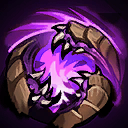 Devouring Maw, Devouring Maw,
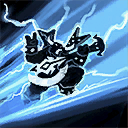 Powerslide + Powerslide +
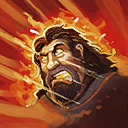 Face Melt, Face Melt,
 Holy Ground etc. may happen. Holy Ground etc. may happen.
During Boss fights team should never be clustered or may take huge damage from enemy AoE combo and wipe. If Boss is softened enough zoning out enemies is smart use of skills, if not - disengage after some posturing is the prudent decision. |
|
Lane is a road connecting both Cores that starts at
inner Defense Lines.
Inner parts are protected by
outer Defense Lines, the middle is contested zone.
Lane Minions fight against enemies on lanes, so do
Mercenaries - they head from
camps to their designated one. Every map has lower (
bottom) and upper (
top) lanes, most have middle (
mid) lane too. Destroying defending
Structures on
at least one lane is the mid-goal of a game.
Main activities connected with lanes are
Laning,
Roaming and
Pushing
|
laner |
hero that fights enemies on lane for XP |
|
bully |
chase opposing hero away |
|
waveclear |
the ability to kill efficiently enemy minion waves |
|
lane presence |
how resistant to bullying and efficient in clearing waves is a hero |
|
Roaming |
crossing the jungle between lanes back and forth |
|
gank |
get enemy hero cornered and outnumbered |
|
push |
attempt to open more space on a lane destroying defending structures |
|
pushed lane |
minions fight on opponents half |
|
deep-pushed |
enemy minions are pushed back to their Courtyard |
|
pre-push |
prepare later push in the lane - ex. exhaust tower ammo |
|
team push |
3+ heroes advance on a lane |
|
split-push |
hero systematically pushes a lane separated from the rest |
|
pushing power |
the potential to advance in a lane |
|
shove |
minions and mercs can push lane by themselves |
|
Lane Manipulation |
assist minions to stack in a powerful wave |
 Laning in Details
Early game is a race to get to Heroics before opponents. XP soaking is essential and opponents should never be left uncontested on a lane. Lanining covers wide spectrum of behavior. Normal situation is teams having a hero or two on a lane, that kill minions and trade some damage.
1v1/2v2 often result in both sides killing the opposing wave and trying to force opponents to early Moonwell use. If one team has very strong laner, or ranged attackers face melee, the other has to defend and rotate.
Good defenders have ranged attack and good waveclear or survivability. Defending 1v1 the position is withing tower firing range, 1v2 is a bit back, often hiding behind Gate. You target minions to save ammo and discourage enemy heroes from diving - early game turrets do significant damage to HP pools.
As against good defenders outnumber leads only to a bit of structural damage (unless part of a pre-push), clever strategy is to use passive XP soak. Bulling enemy away, a hero soaks the XP while minions fight in the middle without attacking them, and only uses skills against the defender or to summon units draining ammo. Such XP denial leaves defender useless on this lane.
While trying to establish lane presence, heroes are targeted only with effective damage - either to scare them or to soften for incoming gank[/u][/goto][/color]. If dominating a lane of fighting for it, overextending should be avoided. In enemy half positioning is on the far side from roaming group. Bruiser type heroes are better suited to roam during Laning Phase.
In normal games depending on map and opposing heroes can be predicted who on which lane will go. Pro games are quite different - 4 or 5 start mid and lane rotation follows enemy set up. After every objective skirmish is important not to leave unattended lanes. Even during skirmishes is good to poke a bit while a teammate with good mobility soaks for XP lead, so that engagement starts for real with level or even tier advantage. |
|
 Roaming in Detals
Transfers from lane to lane or to cap merc camps and objectives has to be done through jungle areas. It is called roaming and can be dangerous if outnumbering enemy group intercepts. Routes should be chosen carefully - without map awareness hunter can easily turn into prey. Heroes who are suited to cross space between lanes back and forth trying to gank roaming enemies, overextended laners or overoptimistic junglers are roamers.
Those with innate stealth (
 Zeratul, Zeratul,
 Nova can do it solo, the rest usually group. Such roaming group should combine burst damage and some CC. Bruiser heroes with good waveclear or melee carries accompanied by a support are common combinations - ex. Nova can do it solo, the rest usually group. Such roaming group should combine burst damage and some CC. Bruiser heroes with good waveclear or melee carries accompanied by a support are common combinations - ex.
 Arthas + Arthas +
 Kerrigan, Kerrigan,
 Illidan + Illidan +
 Uther, Uther,
 The Butcher + The Butcher +
 Tyrande etc. Those with sustained damage belong to lanes. Tyrande etc. Those with sustained damage belong to lanes.
Besides setting up ganks, roamers can clear minion waves in two lanes bulling opponents or soak passively in the bushes in one lane and roam back for action to the next. With good solo jungler on team, roamers cover his lane while absent, when without, it is usually the roaming party that includes camps in its rotation.
During midgame (as for early game objective skirmishes) roaming parties grow in size to 3+, with whole team grouping together for imminent team fights. When playing at disadvantage or map has split objectives, it is common to have 2 roaming groups or a 4 to poke and a split pusher. |
|
 Pushing in Detail
While during early game situations are usually evaluated by level advantage and for midgame the factor is talent tier, late game assessment is based on how far are lanes being pushed. Each team aims at pushing lanes deeper into enemy territory and eventually destroying a Keep. Objectives play huge role in this but heroes factor too. Those with good waveclear, usually ranged attack and cheap summoned units make strong pushers. Extra sturdy tanks (
 Chen, Chen,
 Johanna) can apply a lot of pressure too. Johanna) can apply a lot of pressure too.
On different map each ream has a lane that gives best prospects if pushed to enemy Core, so it is targeted from early game by the strongest pusher on team. Often things start with pre-push - being aggressive in lane trying to exhaust turret ammo.
Against good defenders, pushers like
 Zagara or Zagara or
 Nazeebo can be very effective, as they can both deny XP and keep harassing the Towers. Nazeebo can be very effective, as they can both deny XP and keep harassing the Towers.
Team pushes normally are done behind wave of Lane Minions and/or Mercenaries, or during reward events to speed things up in the selected lane or to open second front.
Split-pushing can go a long way. Playing such hero requires good map awareness, as with this role you can't rely on team support when going deep into enemy territory. Split-pushers can either deal with fortifications on their own, or easily recruit mercs and
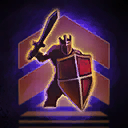 Promote or summon minions. Promote or summon minions.
Lane Manipulations are tricky way to shove a lane while teams are posturing around objectives. The result is stacking minion waves for great pushing power. If lane has enough open space, before joining the team a hero kills only some of the ranged minions in several opposing waves, caps a Siege camp and/or promotes some melees. This way enemy 2nd line will be facing a wave of 20+ minions. With Keep down, you may stack Catapults to even prepare Core Rush. |
|
Symmetry is the way your half of a map matches opponent's side:
Mirror is when both halves of each lane are
exact match.
When
top/bot are reversed it is
Rotation by 180 degrees.
Important Areas - having vision over these or denying it can determine game's outcome.
Map Analysis - comparative value of different elements of a map and their combinations.
Tactical - some decisions concerning exact moment or situation
General Strategy - common sense things to do (or not) on a map
Summary - overview of how games normally go on
Behavior and compositions of coordinated from 1st second pro teams are not subject of those surveys.
Bridge of Death is feature on bot lane of
 Blackheart's Bay
Blackheart's Bay and
 Sky Temple
Sky Temple and top on
 Dragon Shire
Dragon Shire. To push the Keep a team has to enter a bridge leading to it, where is highly vulnerable to flanking and AoE.
Throw Pit is Boss Camp on
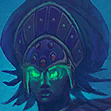 Tomb of the Spider Queen
Tomb of the Spider Queen. Sometimes used for
 Blackheart's Bay
Blackheart's Bay too.
 Details
The reason is that many games with huge lead were thrown, while trying to cap it and opponents got in time for a team fight. Having heroes incapacitated by Giant Scarab's twisters in such confined space, can flip even very favorable engagements. Whole team goes only if has DPS to burst it. Else 2-3 heroes soften Boss, ready to disengage if nearby teammates in lane can't slow enough opponents by poking. It is considered safe to cap with 2 heroes up after team fight.
Capping it may be used as comeback means if things are going south. Also can be use as bait to ambush incoming enemies - especially if they have a lot of Coins or Gems. |
|
The map of PvE and back alleys.
Symmetry - mirror
|
Main Objective |
Collect Doubloons and hand them to Captain Blackheart (spawns at 1:10)
10 (+2 for each next bombardment) activate Ghostship Cannonballs
|
|
Objective Event |
12 Cannonballs are shot in barrages of 3 at closest enemy Structure
|
|
Objective Related |
Doubloons or Coins - collect from Treasure Chests or defeated Doubloon Camps
Doubloon Camp 4 spawn at 2:00 and are defended by 2 Skeletal Pirates. Upon defeating them, 2 Coins and Regeneration Orb drop and starts 2:30 respawn timer.
Treasure Chest -2 spawn periodically and each contains 5 Coins dropped while being destroyed. For every hero the Coin count is tracked on the TAB panel.
Cannonball - deals 2000 direct damage and 250 splash within the circle.
 Objective Timings and Locations, Cannonball Targeting
First Chest spawn at 0:50. Next spawns 150-210 seconds after last Chest is destroyed (during bombardment timer stops). No warnings. Locations are below mid and above bot lanes. Chest HP is measured by hits, bar has 3 segments. Drops a Coin at 6th and 12th, the rest 3 Coins after 18th (destroyed). Pirate Camps are located on both sides of Watch Tower and "Smiley Face"
Barrages of 3 Cannonballs are shot at the nearest defensive line. Targeting order goes mid > top > bot and (if defensive structures are undamaged) Gate -> lower Tower -> upper Tower -> Moonwell -> lone Tower -> Fort. If a whole line is destroyed before 3rd missile lands, last barrage will be of 4 or will happen 5th salvo. Standard 4x3 lasts 45 seconds and stops Chest timer. |
|
|
Map Layout |
3 lanes. Very little space between top and mid, inner parts are separated by Bruiser Camps, outer by Doubloon Camps and a Watch Tower.
Alleys connect inner mid and inner bot to the contested area for turn-ins.
Bushes for most part are replaced by sewer grates.
6 Mercenary Camps: Siege Giants at lower alleys and Knights at S head bot, Knights inner top/mid and Golem Boss at N head top. |
 Layout Details
Areas of strategical importance
Watch Tower - Between top and mid lanes. Provides vision on both top Doubloon Camps, Bruisers moving top and the approaches to Boss and upper Treasure Chest spawning point.
Bushes on three sides make it the place for juking middle-top. Controlling it also creates ganking possibilities against top lane split pushers and coin collectors.
"Smiley Face" zone - this area includes the turn in spot (where Captain Blackheart spawns at 1:10) and surrounding obstacles. Direct routes from every Keep lead to it and make it perfect transit point for team rotation. Having vision over it is very important, as handing Coins and preventing enemies from that is the main strategic goal.
Grave Golem at N (the Throw Pit) - can help a lot to push top Keep, but try not to be spotted and have vision on the approaches. If ahead, better go for it when 2 players up or it may deserve its name once again. | Map Analysis:
Objectives play important role. Mid and top Forts can be taken down with very little additional damage in advance.
Pushing mid Keep is very dangerous - team can be surrounded easily. Same goes for bot Keep - better cap 2+ camps and do it supporting those mercs than team push on Brige of Death. Bot Fort and top Keep are the best targets for split-pushing.
Defensive Bruisers can be timed against enemy's if your Towers are down but Fort stands - otherwise your heroes will lack space against team push. Can't be timed before Chest spawns because of the big variance. Defensive Giants help a lot if bot is pressured. Good to cap those camps as often as possible as opponents have easily access to them. Bruisers at S should always be the first step of your rotation bot. |
|
 General Strategy & Tactics
Tactical:
- capping Watch Tower at the start allows quick 4 man rotation to wave clear top for XP, same mid, and go for upper Chest without risk of ambush (coordinated team). Has to be done really fast to get mid lane minions before turrets kill them.
- if your 1v1 bot is worse AND you can't contest 1st upper chest, a hero rotates for lower one
- chipping 250 HP from both mid lane Towers before 1st bombardment results in destroying that Fort and opening space to offensive Bruisers. For 2nd turn in good to do the same top.
- bushes (grates) bot are good place for passive XP soaking
- open Boss attempt with 2 for bait or 4 for real is the right tool to stop turn-in or prepare one
- destroying outer walls mid and top denies vision on your rotation for Boss or offensive Knights
- if enemy caps Boss and can't be contested, push to destroy bot Keep and force hearth to defend Core | General Strategy:
- early game split pushing bot, 4 roaming mid area
- after first turn-ins bot lane can be pushed as team, split pusher goes top
- with Coins poke and defend, stay grouped and protect coin bearers, they should not overextend
- try to get rid of Coins in initiators and split-pushers, tank carrying many is inefficient
- every turn-in should be protected by vision and positioning
- when opponents have the Coins look for fights targeting the bearers
- with a player up go for offensive Knights, with 2 for Boss
- as with other similar objectives,
 Calldown: MULE is really helpful Calldown: MULE is really helpful
- Boss is much easier as Grave Golem, so going for him baits reaction |
|
Summary:
Plans on this map can be to gather Doubloons, as well as to push lanes the traditional way and go for cheap turn ins later. Still, if a team gets solid lead, it can practically play PvE - have vision over opponent's movement, deflect their active attempts and periodically turn in Coins and cap Mercenaries. Once Keeps start going down, comebacks against cautious opponents are very hard.
Formation at start is usually 4-1, for midgame follow rotations bot and 1-1-3 or 1-4, then it is all about Coins, control over the central area and split-pushes. Ideally turn-ins are fro the full Doubloon amount, but it is always wise to get rid of Coins carried by split-pusher or initiator.
When behind, have 2 roaming groups and try to make opponents split. |
The biggest map so far.
Symmetry - 180 Rotation (so comments are about right half)
|
Main Objective |
Collect 3 Tributes to activate Raven Lord's Curse
|
|
Objective Event |
For 70 seconds enemy team is Cursed: Lane Minions are at 1hp and Fortifications
won't fire. (Core is unaffected)
|
|
Objective Related |
Tribute - spawns in jungle (stone circles) and takes 7 sec to channel.
 Tribute Spawn Timings
Warnings marking the spot are issued 17 sec ahead - 15 countdown and 2 spawn.
1st Tribute Warning is at 2:30 and every tribute timing is semi-randomized, with variance of 20 sec.
Next Tribute spawns 70 sec after previous one is collected or 140 after Curse ends. |
 Tribute Spawn Location semi-randomness
They form 3x2 grid. Algorithm treats TSLocs as sets of 3. 1st TSLoc in game is central (upper or lower jungle). TSLoc never coincides with the previous one. 2nd can be in the same file.
Then rules are: in a set it can't repeat same file; whole set can't be on same rank. |
|
|
Map Layout |
3 lanes, vast jungle in middle part of which are situated the 6 Tribute spawn locations, at the fringes 6 Mercenary Camps - 1 for each lane. Multiple obstacles and bushes create maze-like pattern with several choke points. Siege Giants are next to bot Inner Defense, Knights are above inner mid and Grave Golem above them heads top.
A Watch Tower on each side grants vision over vital area between mid and bot. |
 Layout Details
Areas of strategical importance
Watch Towers - Grant vision over important area which, besides 1 TSL includes the approaches to Siege Giants, inner bot and vulnerable mid Moonwell.
Jungle between top and bot lanes forms a maze with passages leading to Tribute Spawn Locations and merc camps. Good to have vision over it to know how many opponents commit and how they position. | Map Analysis:
Objectives are very important - unless perfectly defended, 2 Curses usually provide decisive lead. The variance in spawning timer rewards flexible rotations.
Zoning and Vision help greatly to set up favorable fights for them.
You want to use every opportunity to pre-push/push top (respectively bot) as Boss there during 2nd Curse either progresses to enemy Core or distracts enemies long enough to be inflicted major damage elsewhere.
Defensive Bruisers apply pressure mid, can be timed defensively against enemy's if your Towers are down but Fort stands (otherwise your heroes will lack space against team push), as well can protect during Curse. Defensive Giants help a lot against enemy Golem bot. Both camps are dangerous to steal, as positions are easy to surround and flank. Boss camps play major role in strategical and tactical decisions on this map.
The TSLs near Bruiser Camps are very easy to protect but if opponents get there first and collect 3rd tribute and Curse, it can snowball - Offensive Knights, Boss, their Boss etc. |
|
 General Strategy & Tactics
Tactical:
- if opponents go for their Boss and seem to have the DPS to take him down before your intervention, better cap yours followed by Defensive Giants
- after capping your Golem consider a split pusher soaking XP behind him and the rest heading for the other Boss Camp with enemy distracted
- with good jungler Giants can be capped before 1st Tribute and create early pressure
- for 1st Tribute is possible only to poke, forcing more enemies to commit, and try to get XP lead from lanes and pre-push top if spawn is bot.
- Offensive Giants are great
 Bribe target Bribe target | General Strategy:
- always should be attempted re-cap Watch Towers with suitable heroes
- early game rotations should include soaking at least as many lanes as do opponents
- during this phase is good 2 of the roaming group to cap camps between Tribute timings
- heroes with zoning abilities help to collect Tributes, those with good mobility soak XP nearby
- while posturing may be used bait opponents into choke point and multi-AoE them setting up flank
- during tribute skirmishes carries are to be focused, in protracted ones healers may be forced OOM.
- from midgame on, Bosses are as important as Objectives
- if unlucky with Tribute spawn that will trigger Curse, cap as many merc camps as possible while poking, or try to isolate and kill at least 1 enemy hero and play aggressively to waste their Curse
- Knights are good distraction before Tribute spawns, as well as shoving a lane (sometimes can be predicted which will be opposite)
|
|
Summary:
Huge map allowing different strategies. Games often pass 20 minutes mark and late game compositions have chance for comebacks if long enough protect their Keeps, while Skirmish compositions have advantage early game. The most important factor is finding the balance between pushing, jungling and team fighting. Mobility, Zoning and Vision are good things to have on your heroes. Team distribution is like roaming party of 3 that is changing size to 4 or 2 depending on the situation. Games are usually decided by Bosses after 2 Curses but once a Keep is down, Core Rushes are always to be considered as a threat.
 Calldown: MULE can slow down pushes especially in opponent's Golem lane (if turns out that their strategy revolves around sieging). Calldown: MULE can slow down pushes especially in opponent's Golem lane (if turns out that their strategy revolves around sieging). |
Very tall map but its objectives make it the fastest one.
Symmetry - mirror
|
Main Objective |
Control Temples when active by standing on them with a hero.
|
|
Objective Event |
Temple laser shoots every second at closest enemy Structure
|
|
Objective Related |
Temple - circular object, when charged a hero standing on it uncontested controls it for his team. Total of 3, have their own icons under minimap showing their state, charged ones have minimap icon too.
Temple Guardians - Temple defenders that spawn upon activation and after the 10th/25th shot is fired. More details in Objective related Units
 Temple Timings and other Details
1st Temple wave starts at 1:30, each next wave 120 sec after last shot is fired. Warning timers have 15 sec countdown.
Temples have 40 1/sec shots then charge up for 5 sec and shoot another 5 in rapid succession. Laser damage starts at 350, scaling by +50 per wave.
Takes 3 sec to take or contest control. If no hero stands upon it for 3 sec, shots stop and Temple becomes neutral. Once charge up starts, no longer a hero is needed.
The 3 Temples are dedicated (top to bot) to Crocodile, Snake and Jackal.
Their spawning order is semi-random:
1st top + mid; 2nd bot; 3rd bot + random; 4th and 5th 1 or 2 random; 6th all three
The big Guardian spawns at initial activation, 10th and 25th shots trigger spawns of pairs of ranged Temple Guards. Surviving ones crumble to dust after the 40th shot. Guardian kill nets nice XP. |
|
|
Map Layout |
3 lanes, vast space between them. Several of the Bushes have tactical value.
Relatively open Temple area at N and very specific one down at S.
Bridges of Death in front bot inner Defense Lines, vertical alleys connect them to mid.
A Watch Tower between mid Temple and top providing vision over the area.
5 Mercenary Camps: Knights between top and mid head top. No mercs on mid lane.
Giant Scarab at C and Siege Giants next to it head bot. |
 General Strategy & Tactics
Tactical:
- capping Watch Tower after initial skirmishes makes safer contesting Snake Temple (mid).
- after 1st temple wave Siege Giants are to be capped. Team having mid lane AND Watch Tower is in position ro quickly move for offensive Giants
- it is good to cap Knights before Jackal Temple (bot) timing, preferably a bit later than opponents do.
- during fights inside bot temple area, standing on corner bush body blocks escapes (
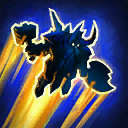 Dwarf Toss), a hero outside may enable ascapes ( Dwarf Toss), a hero outside may enable ascapes (
 Adaptation) Adaptation)
- bushes next to Scarab are good place to set up Boss steal (
 Holy Ground), always check in advance, same for those above for drones. Holy Ground), always check in advance, same for those above for drones.
- Boss attempt may draw enemies away from top temple when not in position to contest it
- when unable to contest Boss, deep team push top will force opponents to hearth after capping | General Strategy:
- early game split-pusher bot (if possible with good mobility), 4 (1-3) at Watch Tower, mid lane presence before 2nd spawn wave makes rotation easier
- after initial mercs, next camps are vulnerable and should be capped whenever rotations permit it
- during 2nd spawn at least 4 rotate bot to contest temple or attempt to gank enemies on the lane
- unless planning to snowball into quick victory,
 Calldown: MULE is rally needed gamechanging talent Calldown: MULE is rally needed gamechanging talent
- big travel distances increase importance of mobility and vision, key bushes can be checked with low CD AoE.
- as usual go for Boss if 2 players up or a player and a tier.
- if unable to engage directly always look for dealing some structural damage to remain in the race
- Bridge of Death flank, Boss steal, split-pushing and Core Rush can quickly turn the tables when behind |
|
 Temples and Team behavior
The snowballing nature of this map makes Temples extremely important factor. Their damage scales, structural damage adds up and if things come to 6th spawn, that is 81,000 damage from 3 different sources.
There are two approaches how to play the map:
- to race either by contesting every objective, split-pushing while keeping opponents at check and stealing whatever amount of shots possible or finishing the phase quickly and sticking with composition goals
- to hinder and prolong hoping to dominate with powerful late game composition. Usually double temple spawns are split between teams but sometimes such comps prefer to have more time before next spawn - less destroyed defensive structures by the time of their power spike.
Either way, capping those objective plays major role and deserves its subsection.
It is never worth to have more than 2 heroes over the objective - if contested you take a lot of AoE damage and if not opponent can get same result on the other active temple AND soak XP from 2 lanes
Defenders of top and mid temples are at disadvantage - temple units keep aggro until you are out of sight range or are attacked by somebody closer to them. Unless there is full awareness of enemy whereabouts, cappers should be ready for retreat. Early game 2 heroes with decent dps can go for the Guardian for XP. 1 hero is better only to dodge, after 10th shot to kill the Guard on the side he plans to retreat to minimize damage. When under 50%HP better to swap position with the nearby laner and refresh at Moonwell. It is tricky to bait Guardian AoE towards opponent's expected arrival and at once go back closer to safety. Heroes capping temple should always be backed up by nearby teammate. If heroes from both sides involve in skirmish or team fight over such objective, all attacks should be against enemy heroes and positioning aims to transfer Temple unit aggro to them.
Bot temple is very different. Team rotating there first caps it with 1-2 heroes and has 2-3 on bot lane soaking XP and covering the closer choke point, so that enemy has to come as a ream if willing to contest or risk being cornered. Getting all heroes inside is a mistake - after capping will be hard to break a siege and opponents can prevent hearthing by constant pokes.
When unfavorable compositions or tier disadvantage prevent contesting objectives, a team may bet on split-pushes - with map being very tall, travel distance from bot to top lane is significant. The party keeping opponents busy and trying to steal a few shot shouldn't overextend though - player loss on
 Sky Temple easily snowballs - cap Boss, destroy bot Keep and eventually Core is rushed. Sky Temple easily snowballs - cap Boss, destroy bot Keep and eventually Core is rushed. |
|
Summary:
Long travel distance between lanes and lots of structural damage dealt by objectives make this map the fastest one. This favors strong early game heroes, still mobility, vision and
 Calldown: MULE are things all teams would like to have. Late game compositions have to be resourceful in defending and stalling, so that no Keep is lost by the time of their power spike. Calldown: MULE are things all teams would like to have. Late game compositions have to be resourceful in defending and stalling, so that no Keep is lost by the time of their power spike.
Game usually starts 4-1, rotating for 2nd spawn as 1-4. All 3 lanes are pushable with bot being critical, so having it covered by Bridge of Death helps against very early Keep loss (which may still happen after team wipe at bot Temple and Boss being capped immediately). On
 Sky Temple every bit of unpunished structural damage counts, so teams have to be able to quickly decide when to push, when to defend and when to rotate for main and secondary objectives. Good Map Awareness and correct assessment of team strong and weak sides are key for making the correct decisions. Sky Temple every bit of unpunished structural damage counts, so teams have to be able to quickly decide when to push, when to defend and when to rotate for main and secondary objectives. Good Map Awareness and correct assessment of team strong and weak sides are key for making the correct decisions. |
IRL was professional chess player (GM) switched to coaching and so far was on the teams of two World Champions. That explains why I like to maintain complete databases - in warlike strategies information is a powerful weapon that lets you form optimal tactical and strategical approach to different situations.
In my free time used to play a lot of Starcraft, didn't particularly like MOBAs. Last year however was attracted to HotS and so far spent hundreds of hours enjoying it - both in solo queue as well as playing on organized non-professional team. tempesti is the ID on my practice account, mostly play split-push specialists (
 Zagara
Zagara,
 Sgt. Hammer
Sgt. Hammer,
 Abathur
Abathur,
 The Lost Vikings
The Lost Vikings), but also supports and off-tanks relying on positioning (
 Brightwing
Brightwing,
 Li Li
Li Li,
 E.T.C.
E.T.C.,
 Arthas
Arthas)
5+1 maps left
Level/Tier advantage section - what to do if ahead or behind
to find out Punisher and minion stats and add to Units
12 Augost 2015 - Having most data formated, time to publish it before next patch is official and add the rest when ready.







 Lane Minion Stats
Lane Minion Stats
Quick Comment () View Comments
You need to log in before commenting.